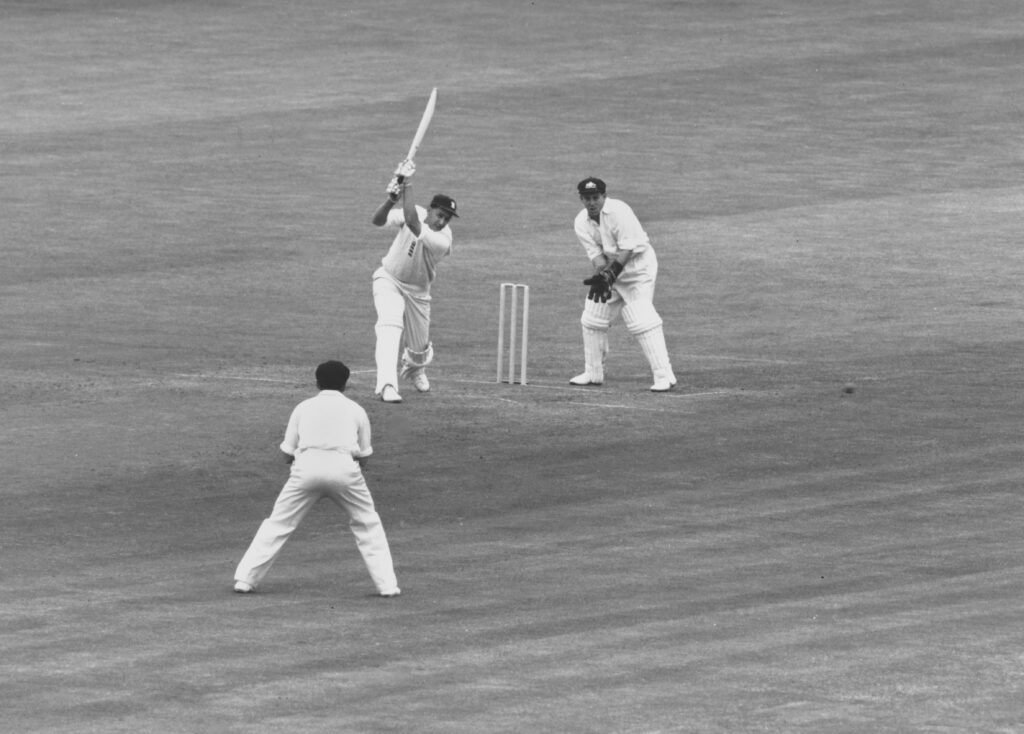Our cricket in retirement series, outlining the involvement of people in the game on and off the field through their lives, features Raman Subba Row. Richard Spiller profiles one of the most influential figures in the national game who is now England’s oldest living Test player.
Success on the field was only the first course in Raman Subba Row’s lifelong involvement in cricket. He was just 29 when he played the last of his 13 Tests, bowing out with a century against Australia at The Oval in 1961, his second of that Ashes series. Many players might have regarded that as the ideal platform to establish a long international career.
Subba Row’s first-class career – which had started at Surrey before moving to take on the captaincy of Northamptonshire – also ended that year, the left-hander having made 14,182 runs at 41, his Test average closing at a lofty 46.
He had risen through Whitgift School, earned a place in a high quality Cambridge University side and in the holidays was good enough to get into Stuart Surridge’s barnstorming Surrey side before the attraction of captaincy took him to Northampton.
Perhaps it was a signal that The Oval would continue to play a large part in his life that his highest score, making 300 over 566 minutes, in 1958 against a side on their way to claiming a seventh successive County Championship title.
Subba Row’s Test debut came six weeks later but in the age of gentlemen and players, when there was little money in the game, he was determined to forge a business career.
Establishing his own public relations company proved a success but Subba Row was anything but finished with English cricket, which was dominated by MCC at Lord’s.
Crowds were steadily shrinking, despite the arrival of limited overs matches in 1963, and the game badly needed new sources of income if the first-class game was to avoid falling apart. Subba Row was alive to that more than most, joining the Surrey general committee in 1965 and proving one of the leading figures in the foundation of the Test & County Cricket Board. Predecessor of the ECB, it gave the counties a much greater say in the running of the game.
He was active at all levels too, instigating a meeting of the county’s leading clubs at Old Whitgiftians in the autumn of 1966 which would result in the formation of the Surrey Championship in 1968.
The survival of The Oval was even in doubt around that time, an appeal having to be made to members and friends for donations during the winter of 1970-71 to ward off the desperate prospect of Surrey going bust. Subba Row took over the chairmanship of the club in 1974 and found allies in the likes of Derek Newton and Bernie Coleman, three members of what were dubbed the “gang of four” by one sceptic for “wanting to run the club like a business”.
Coleman’s response explained why: “Of course we wanted to run it as a business because otherwise Surrey were going to go out of existence.
“Raman understood that better than most. He was brilliant because he knew what needed to be done and how it needed to be done. It meant he needed to be ruthless at times, although he always did it in a very nice way.”
Maintaining a creaking ground – The Oval had been patched up with the slender resources available after the Second World War and then intermittently in the following decades – was a continuing worry for Surrey while fortunes on the field reached a nadir in finishing 16th out of 17 in the 1978 County Championship.
An invitation to Micky Stewart to join Subba Row and Newton for Boxing Day drinks was made for more than sociability, becoming the team manager the following spring, and while fortunes picked up on the field, they were also transformed off it.
Now chairman of an executive board which took day-to-day decisions, Subba Row spearheaded the rebuilding of the ground, which reached its peak with the Save The Oval appeal in 1988 and led to the building of the Ken Barrington Centre/Bedser Stand. Anne Bickerstaff, doyen of the club office, recalled one Christmas when there was too little in the club’s coffers to pay staff their promised bonus. Subba Row disappeared, returning soon having taken the necessary funds from his own account to make up the difference.
He still found time to manage England’s tour of India in 1981-82 and take over the chairmanship of the TCCB from 1986-90, overseeing Stewart’s appointment of Stewart as England’s first manager, and even when he stepped down from the Surrey executive board in 1992, there was little let-up in activities. Subba Row became one of the early ICC match referees, relishing continual involvement in the game while meeting up with old rivals and friends.
Although ill-health means he no longer visits the Kia Oval, his wife Anne continues to do so and Raman, having packed up playing so early, is now England’s oldest living Test cricketer at 91.











